III. | CIRCULAR FASHION¶

| MATERIAL WASTE - LASER CUT |¶

-
reduce waste
- recycle material / biomaterials
- no sewing
- local production
| MODULARITY - HAND/CAP |¶
- The main issue of modular systems is material leftovers and waste. The solution was to find a way how to reduce it as much is it possible. By using some kind of "tiles" we are able to change the gaps between them part of the geometry. So we can use each part of the system and implement it in the final design.
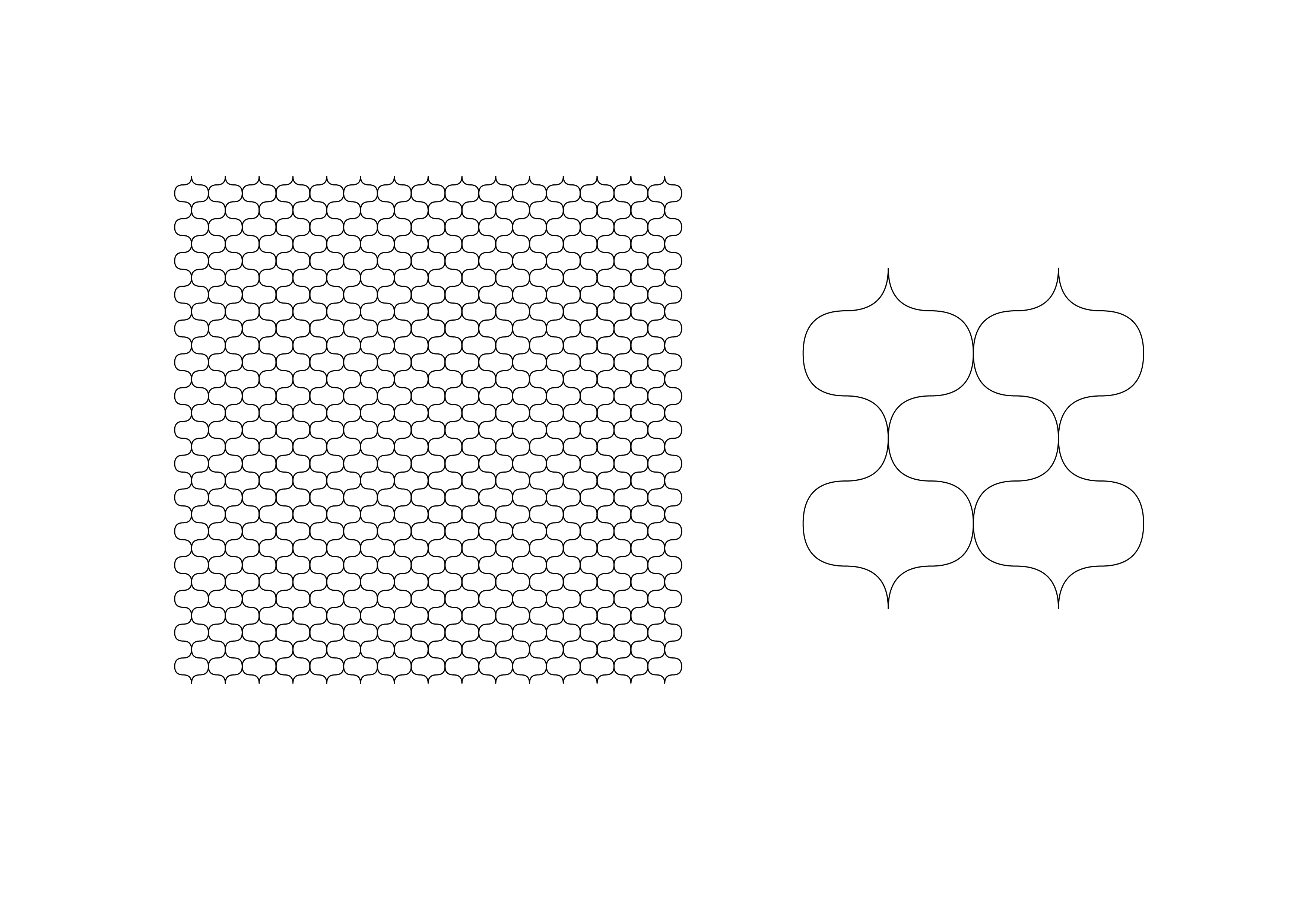
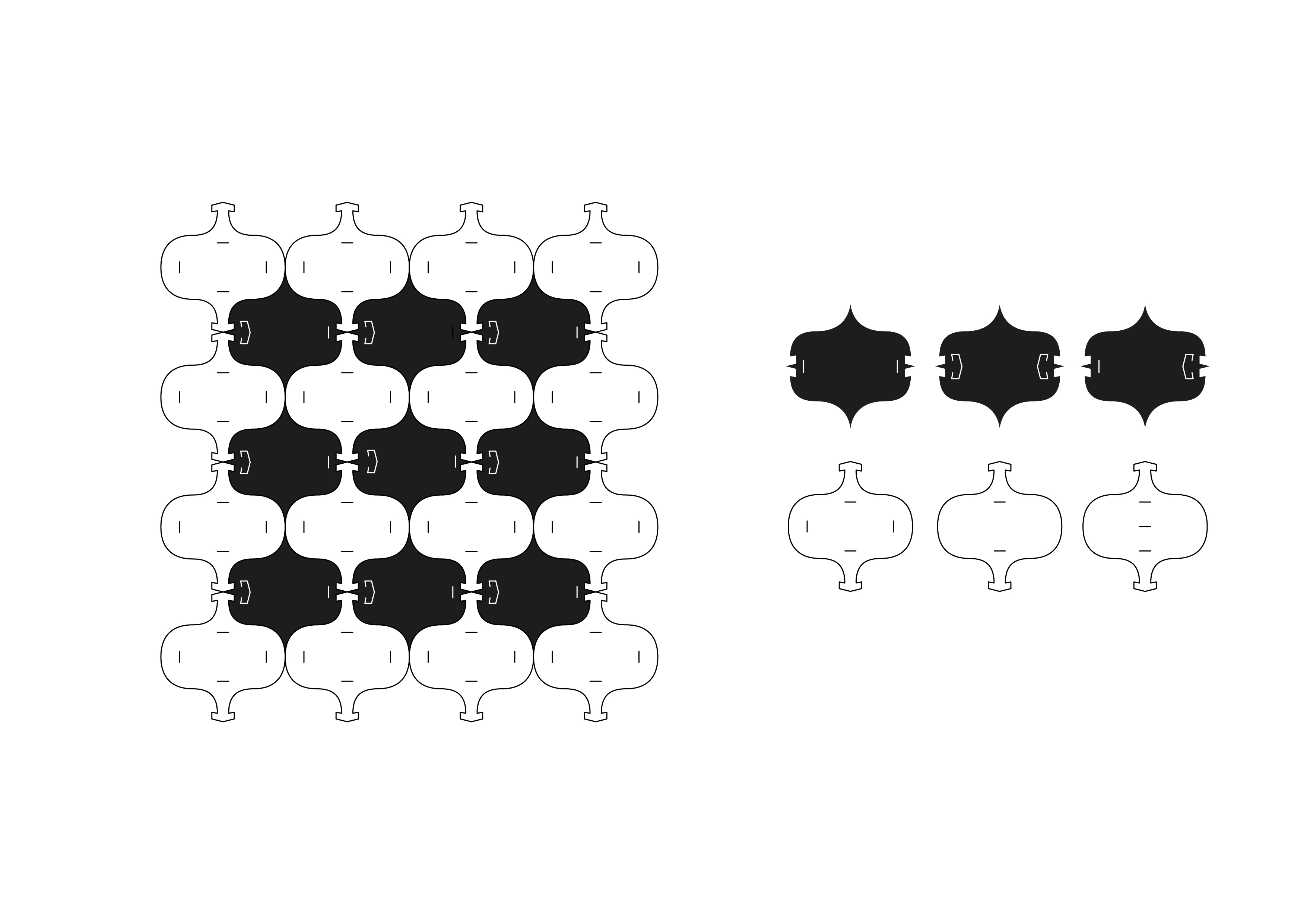
LASER CUTTING¶
Material Parametres¶
| Material | Thickness | Laser cutter | Power | Speed | Cutting time |
|---|---|---|---|---|---|
| PUNTO ROMA | 0.5 mm | x | 25 | 1 | 20 min 8 s |
Tutorials¶
- Fabricademy Bootcamp 2017 - Paris - Tutorial - Trotec Laser cutter
- How to use the TROTEC Speedy 400 - Laser Cutter
Joints¶
- three different types - 2 male joints with 2/3/4 female parts
- three different types - 2 female parts / 2 male parts / 1 male and 1 female part
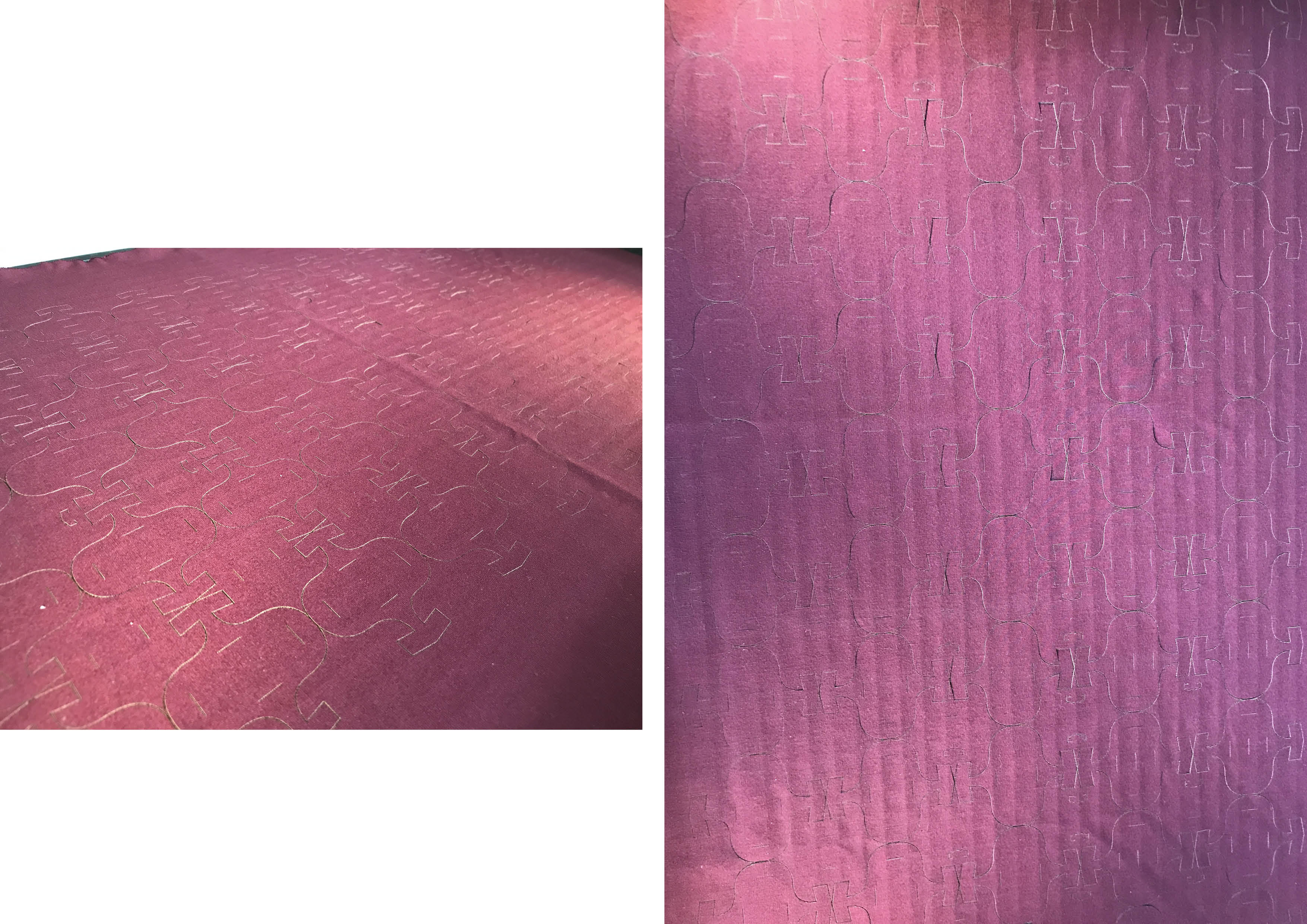

Step by step¶
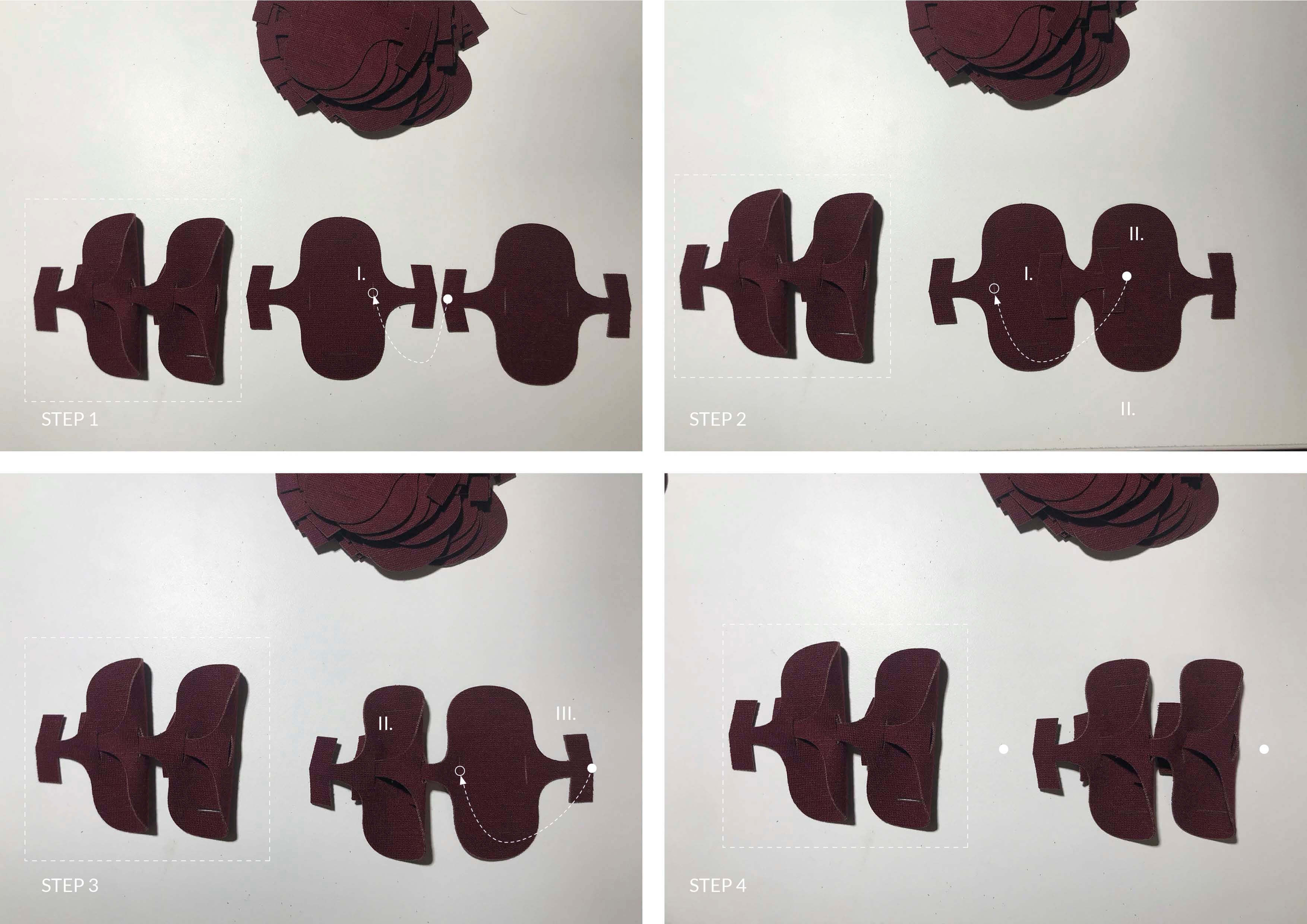
Flexibility testing¶

- Conclusion: stronger material is needed
Prototyping¶
-
2.type
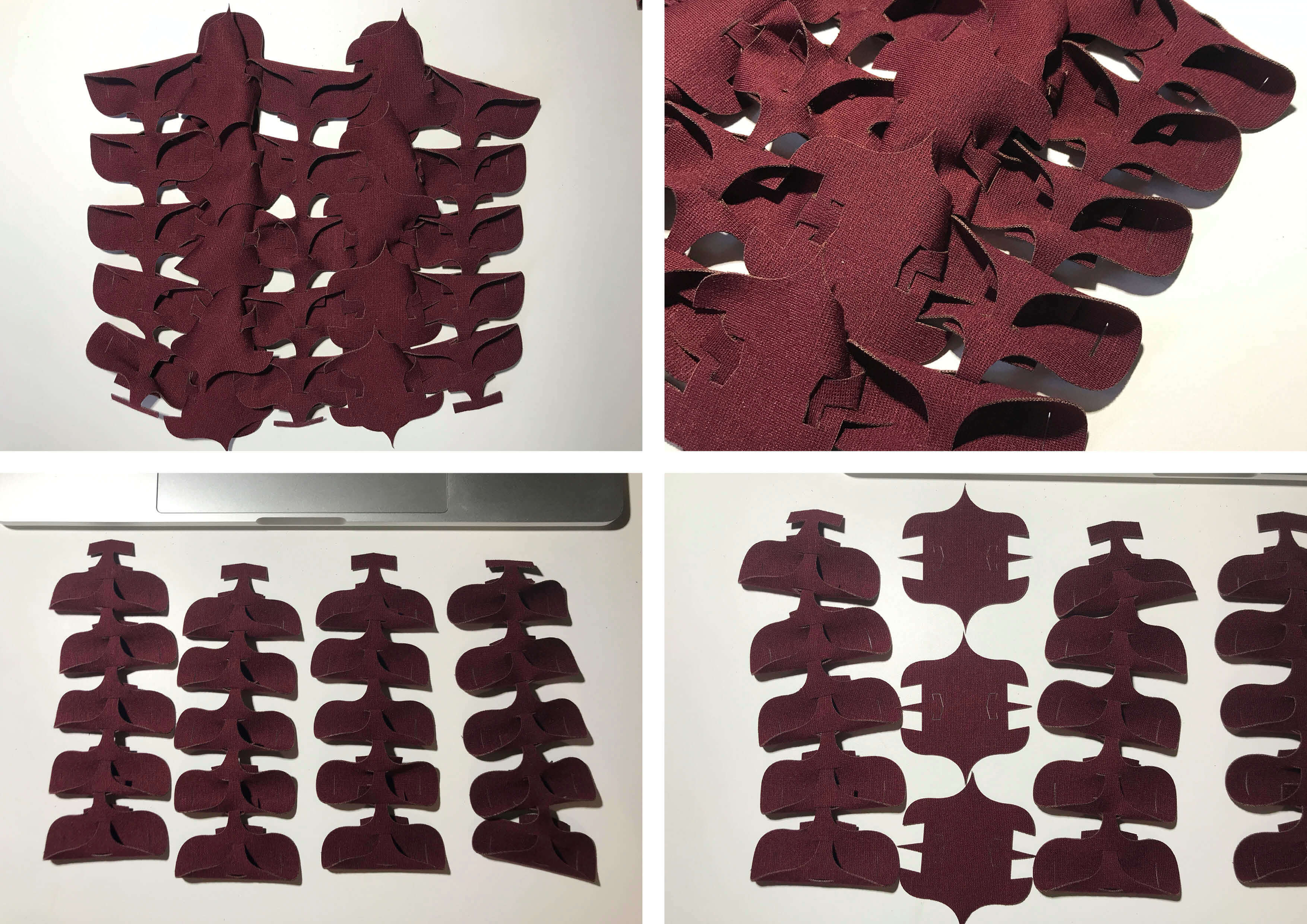
-
3.type
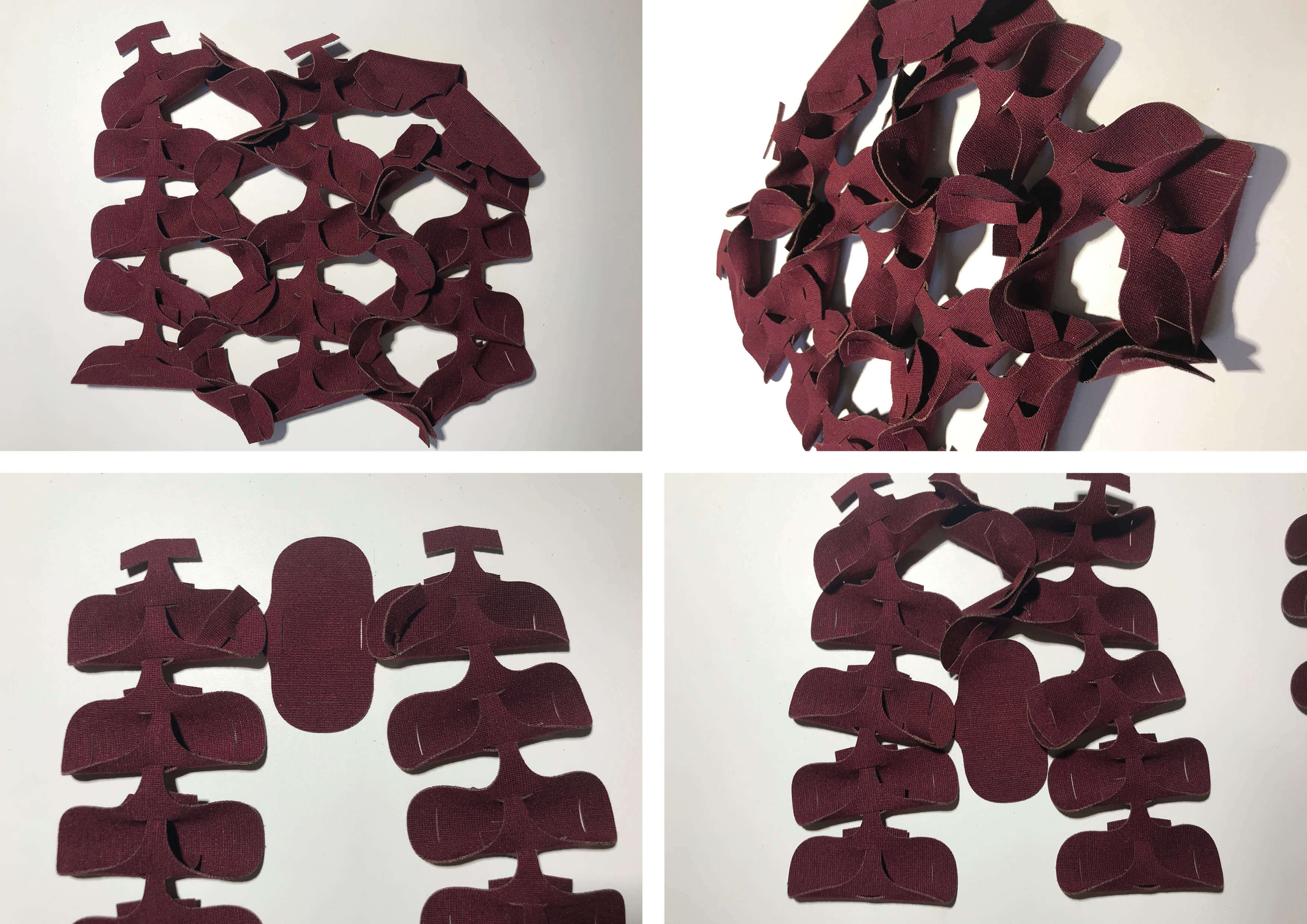
Application¶
- Modular geometry turned into jewellery or wearable objects with the function of emphasizeing parts of the human body that may be deformed by nature or accidents.
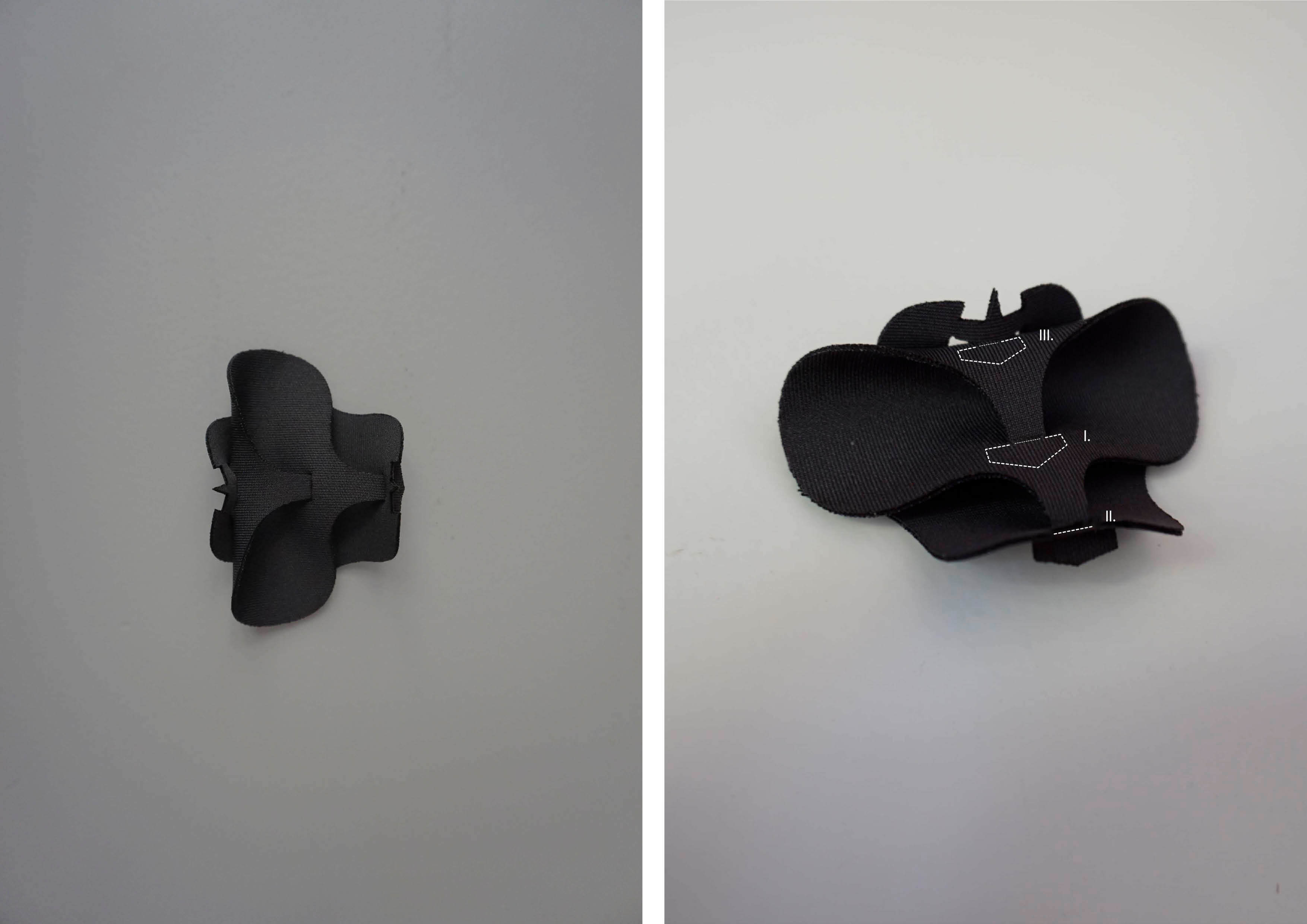

| NONWOVEN |¶
- Development of zero waste - laser cutted wave pattern combined with "handcrafted" waving method. The aim of the pattern was to create a structure without waste material and nevertheless to create a new way of "woven technique".
2D prototyping¶

LYCRA 01 - Material Parametres¶
| Material | Thickness | Laser cutter | Power | Speed | Cutting time |
|---|---|---|---|---|---|
| LYCRA | 1 mm | x | 20 | 1 | 2 min 10 s |
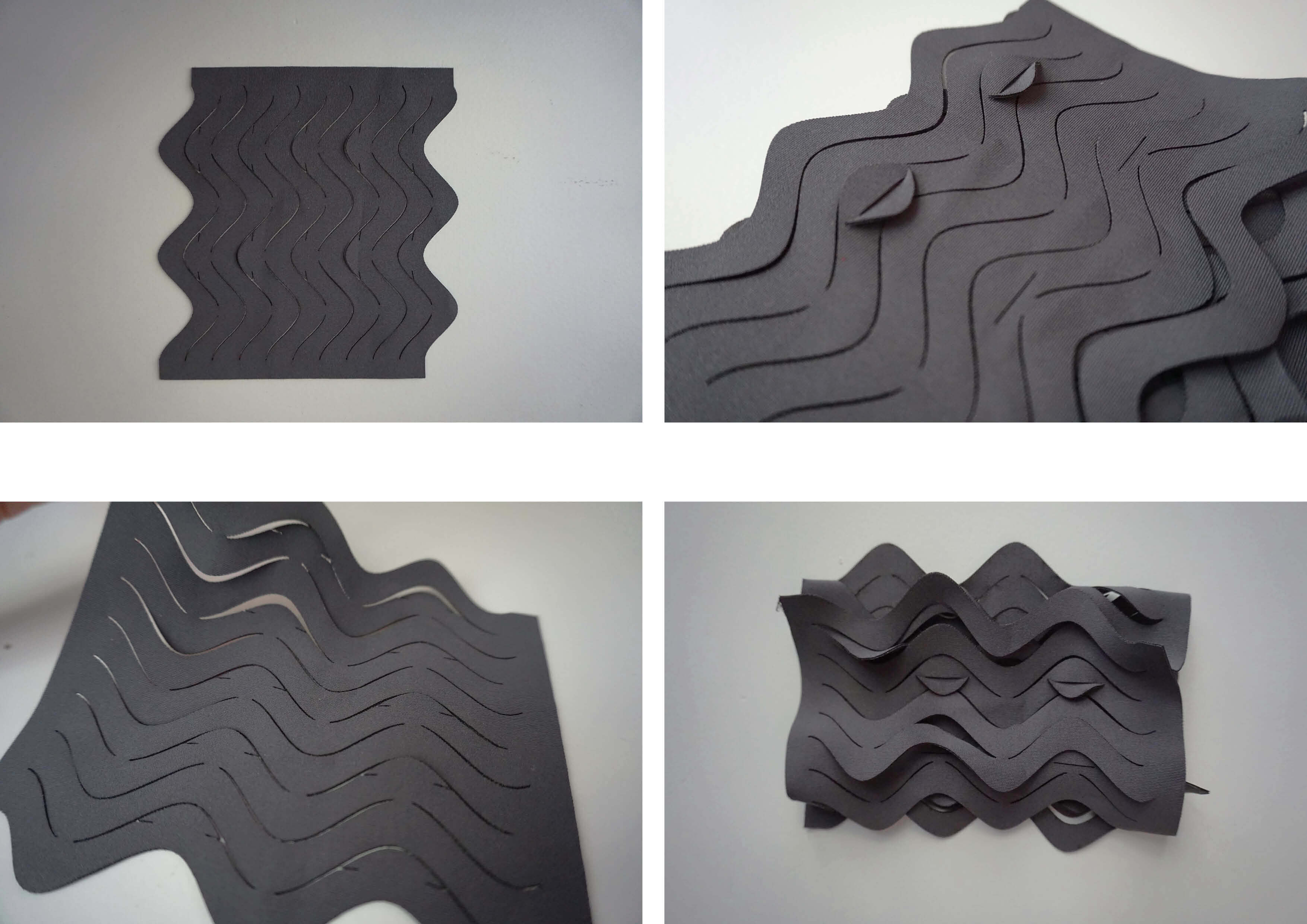
LYCRA 02 - Material Parametres¶
| Material | Thickness | Laser cutter | Power | Speed | Cutting time |
|---|---|---|---|---|---|
| LYCRA | 3 mm | x | 20 | 1 | 4 min 20 s |
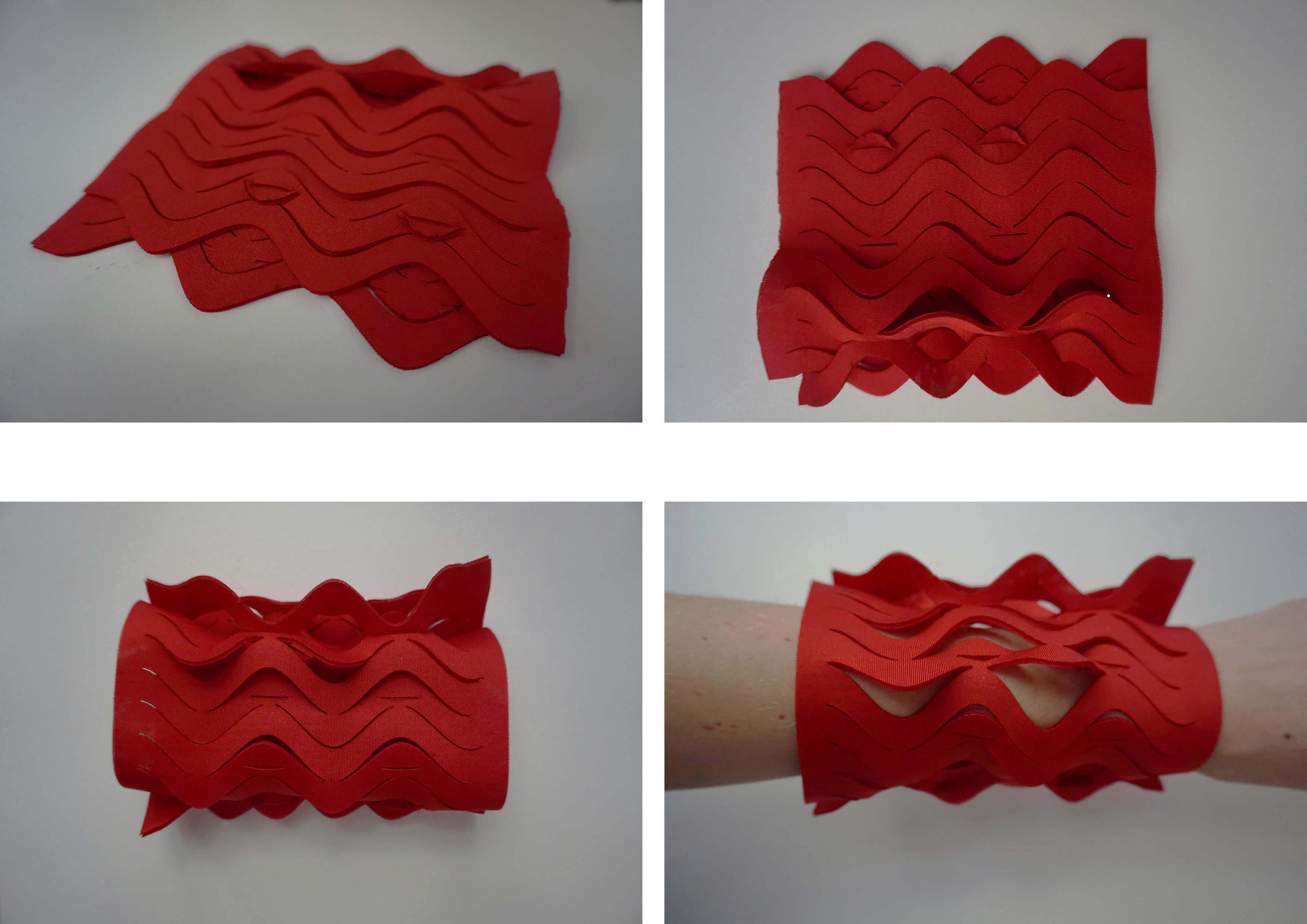
- The wave pattern does not contain any waste material and it is laser cutted in one rectangle piece
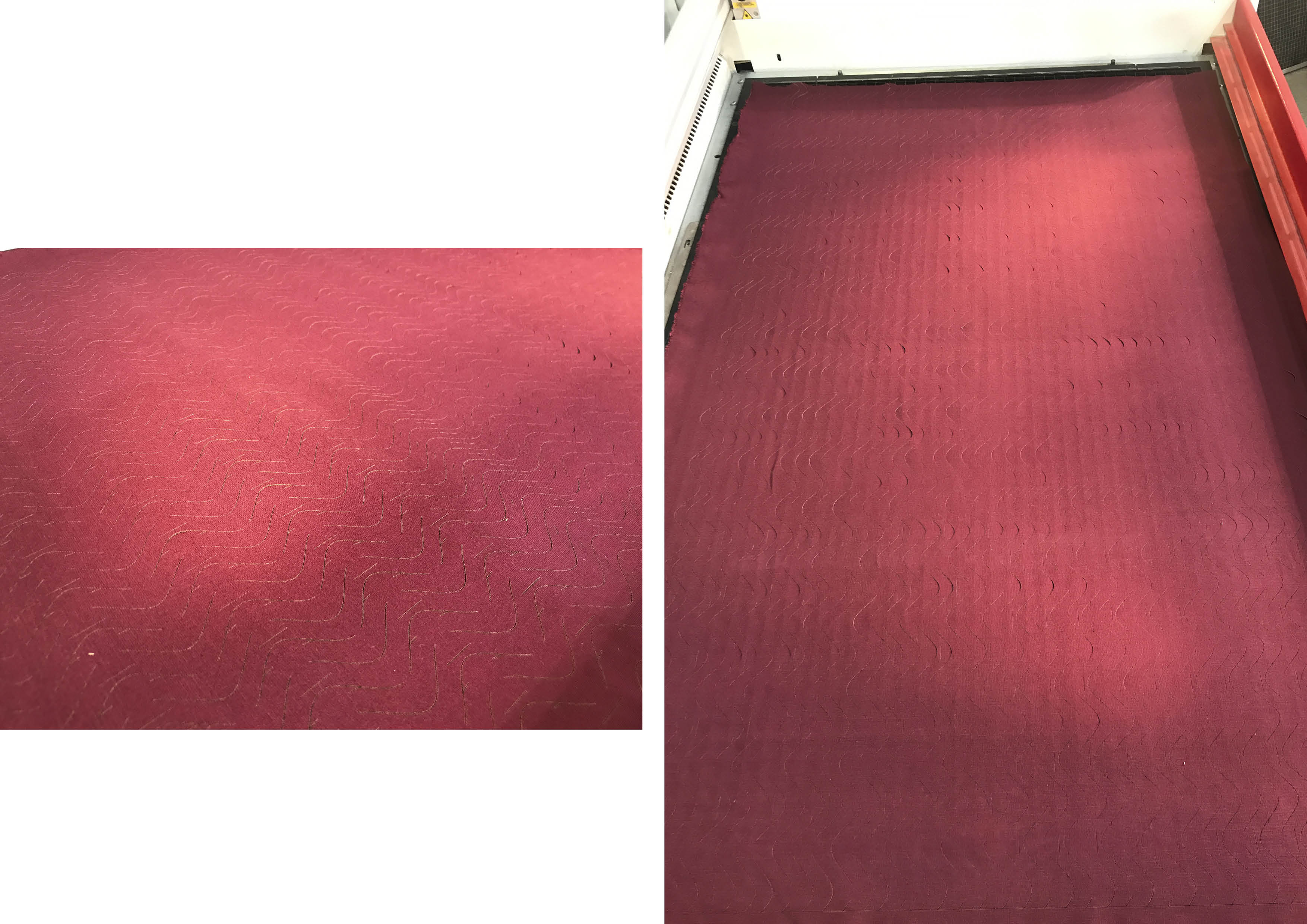
LYCRA 03 - Material Parametres¶
| Material | Thickness | Laser cutter | Power | Speed | Cutting time |
|---|---|---|---|---|---|
| PUNTO ROMA | 0.5 mm | x | 25 | 1 | 25 min 8 s |
NONWOVEN METHOD¶
Steps¶
- Wave after wave is intertwined with the top of the curve. We are also able to regulate the distance between the curves using a different connection system.
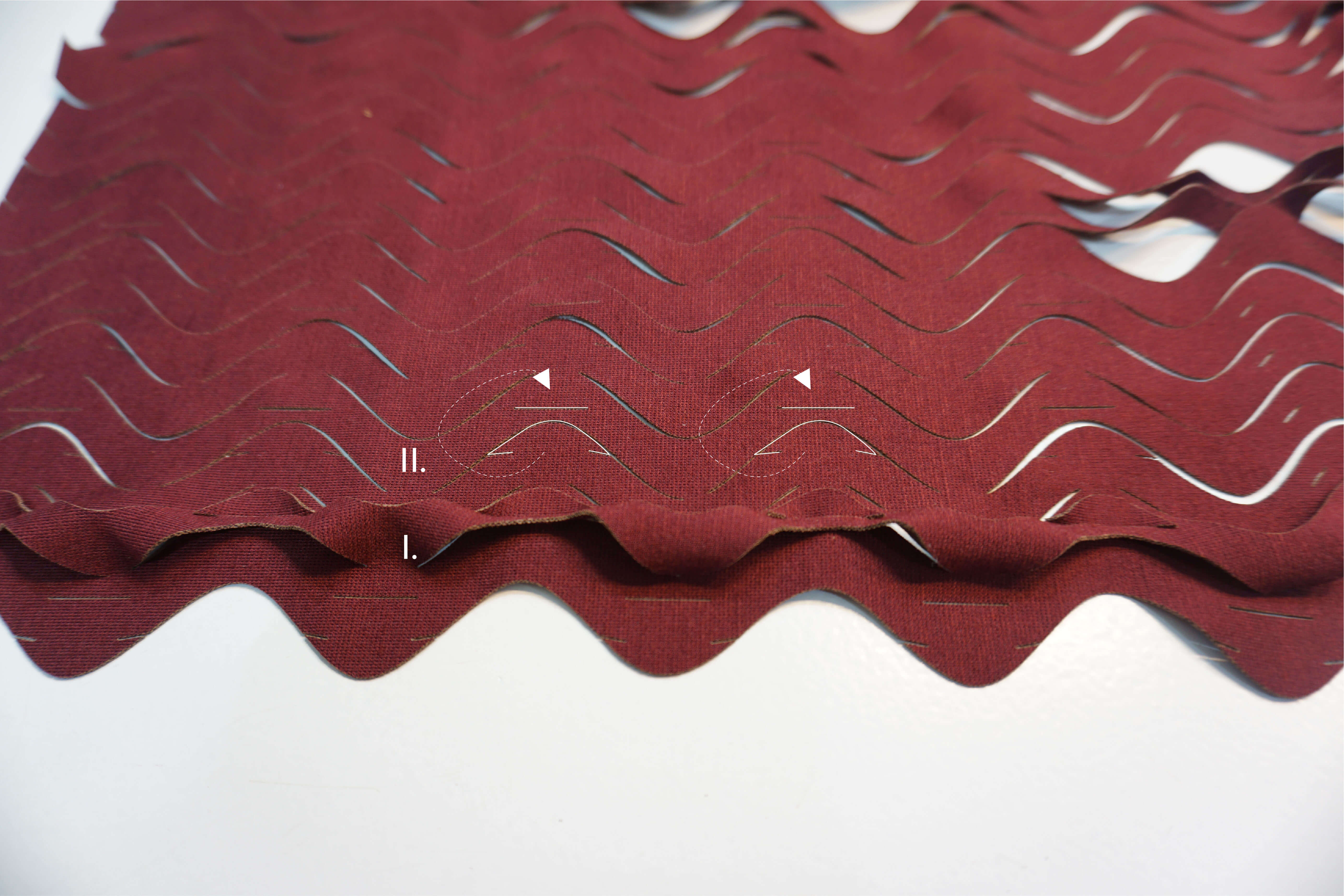
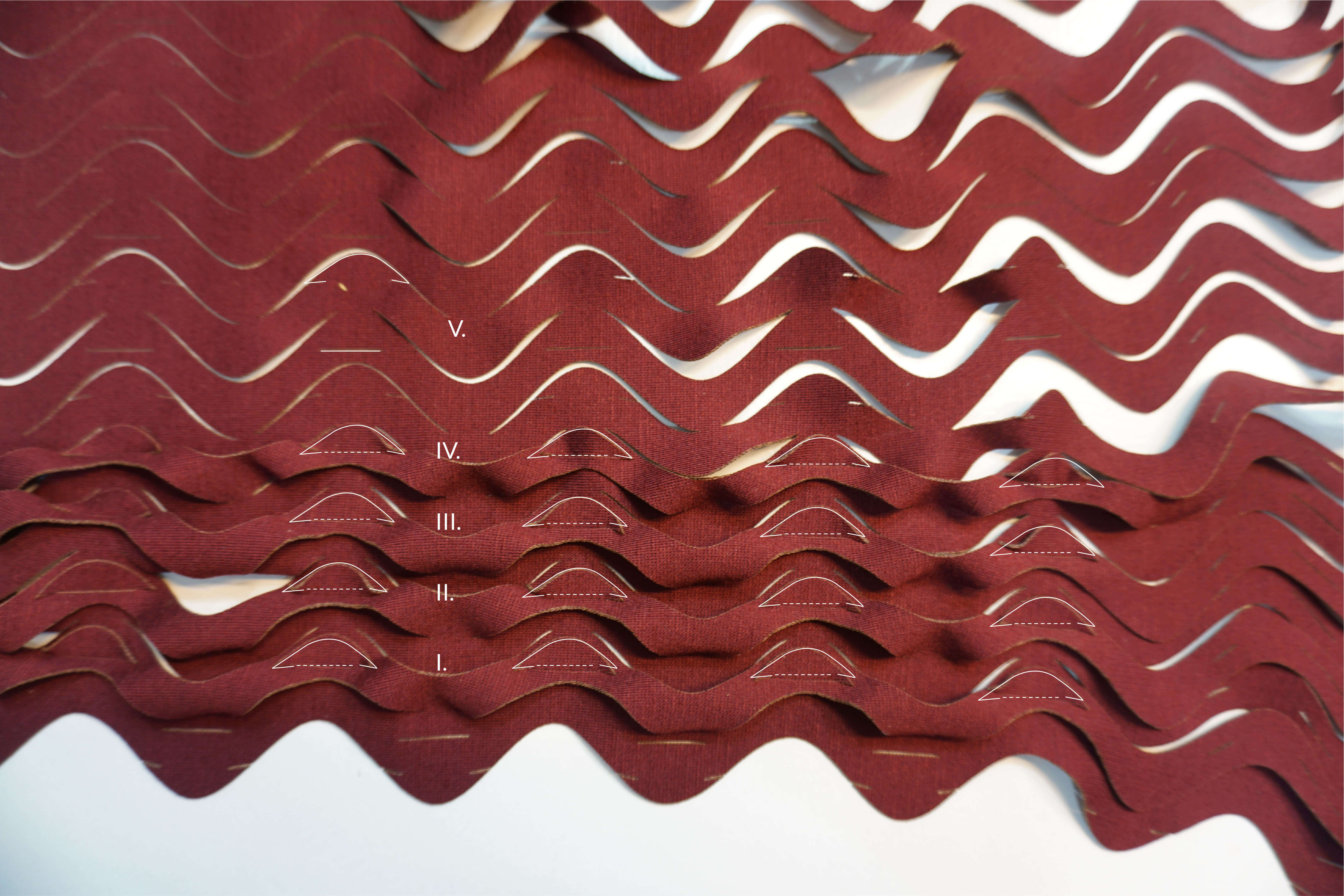
Prototyping¶
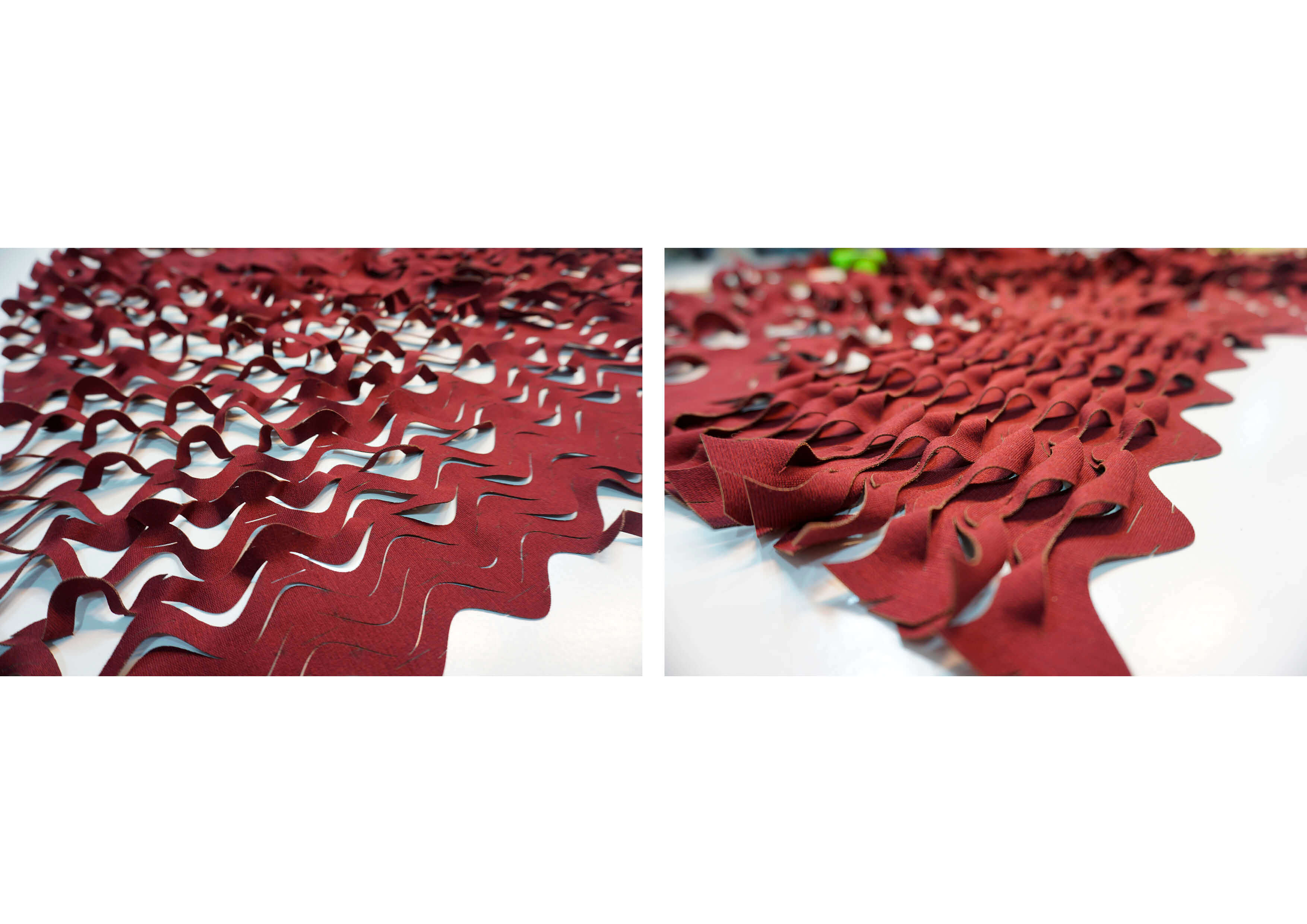
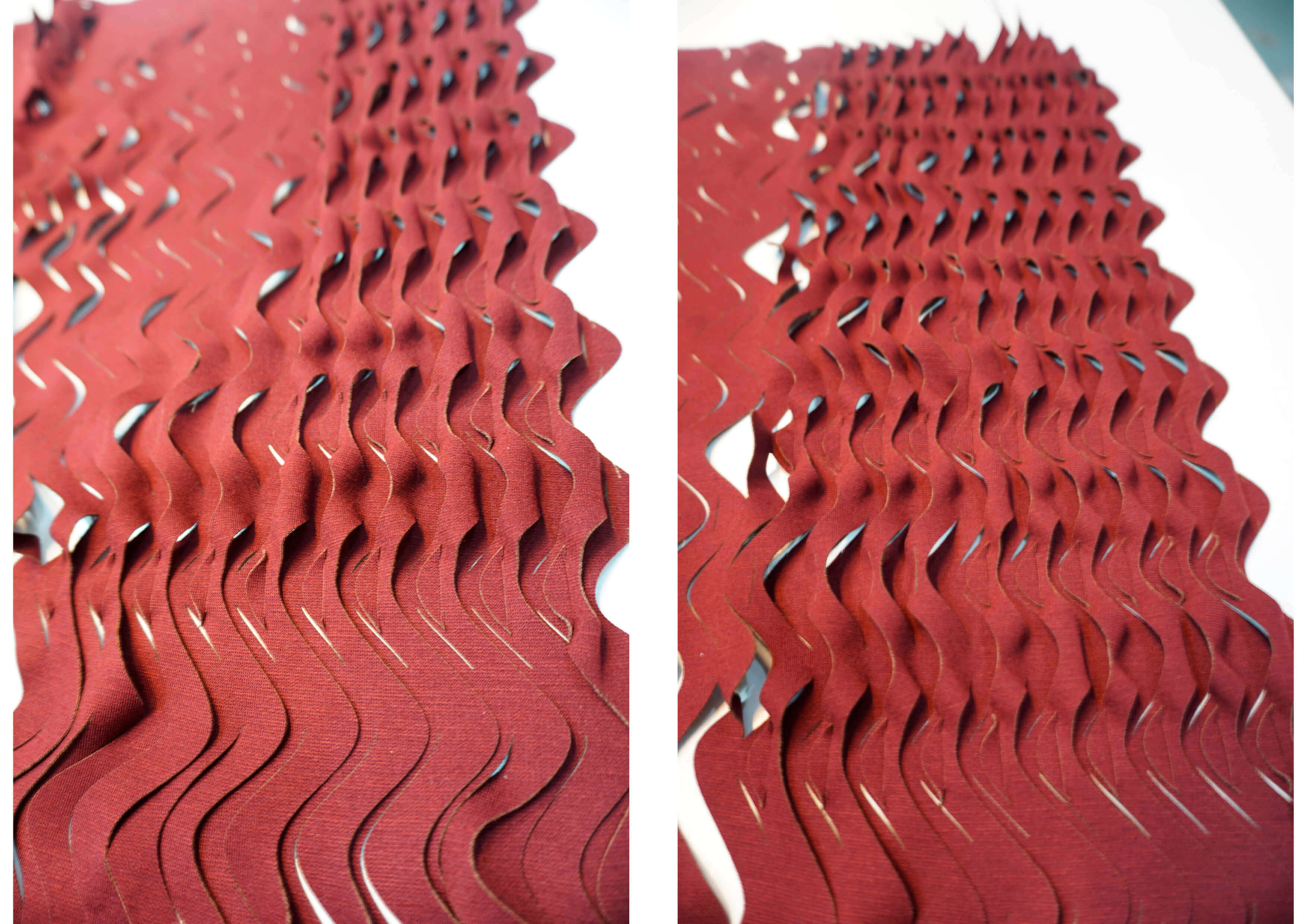

Flexibility testing¶


- Conclusion: stronger material is needed, for example: thicker neoprene 2-3 mm, minimize the amount of gaps on the shoulders
KIMONO¶
- new version (4 pieces with interconnected parts on the shoulders and sides, without sleeves)
2D prototyping¶


Fabrication¶
Parametres¶
| Material | 1. layer | Thickness | Laser cutter | Power | Speed |
|---|---|---|---|---|---|
| NEOPREN | Engraving | 2.5 mm | x | 10 | 100 |
| Material | 2. layer | Thickness | Laser cutter | Power | Speed |
|---|---|---|---|---|---|
| NEOPREN | Inside cut | 2.5 mm | x | 20 | 1 |
| Material | 3. layer | Thickness | Laser cutter | Power | Speed |
|---|---|---|---|---|---|
| NEOPREN | Outside cut | 2.5 mm | x | 20 | 1 |
Laser cutting Parametres¶
| Material | Thickness | Laser cutter | Power | Speed | Cutting time |
|---|---|---|---|---|---|
| NEOPREN | 2.5 mm | x | 10 | 100 | 5 min 52 s |
| NEOPREN | 2.5 mm | x | 25 | 1 | 22 min 46 s |
| NEOPREN | 2.5 mm | x | 20 | 1 | 8 min 8 s |
| Material | Thickness | Laser cutter | Power | Speed | Cutting time |
|---|---|---|---|---|---|
| NEOPREN | 2.5 mm | x | 10 | 100 | 6 min 1 s |
| NEOPREN | 2.5 mm | x | 25 | 1 | 23 min 2 s |
| NEOPREN | 2.5 mm | x | 20 | 1 | 11 min 49 s |
| Material | Thickness | Laser cutter | Power | Speed | Cutting time |
|---|---|---|---|---|---|
| NEOPREN | 2.5 mm | x | 10 | 100 | 8 min 24 s |
| NEOPREN | 2.5 mm | x | 25 | 1 | 26 min 2 s |
| NEOPREN | 2.5 mm | x | 20 | 1 | 12 min 3 s |
| Material | Thickness | Laser cutter | Power | Speed | Cutting time |
|---|---|---|---|---|---|
| NEOPREN | 2.5 mm | x | 10 | 100 | 7 min 41 s |
| NEOPREN | 2.5 mm | x | 25 | 1 | 29 min 59 s |
| NEOPREN | 2.5 mm | x | 20 | 1 | 11 min 10 s |
Results¶
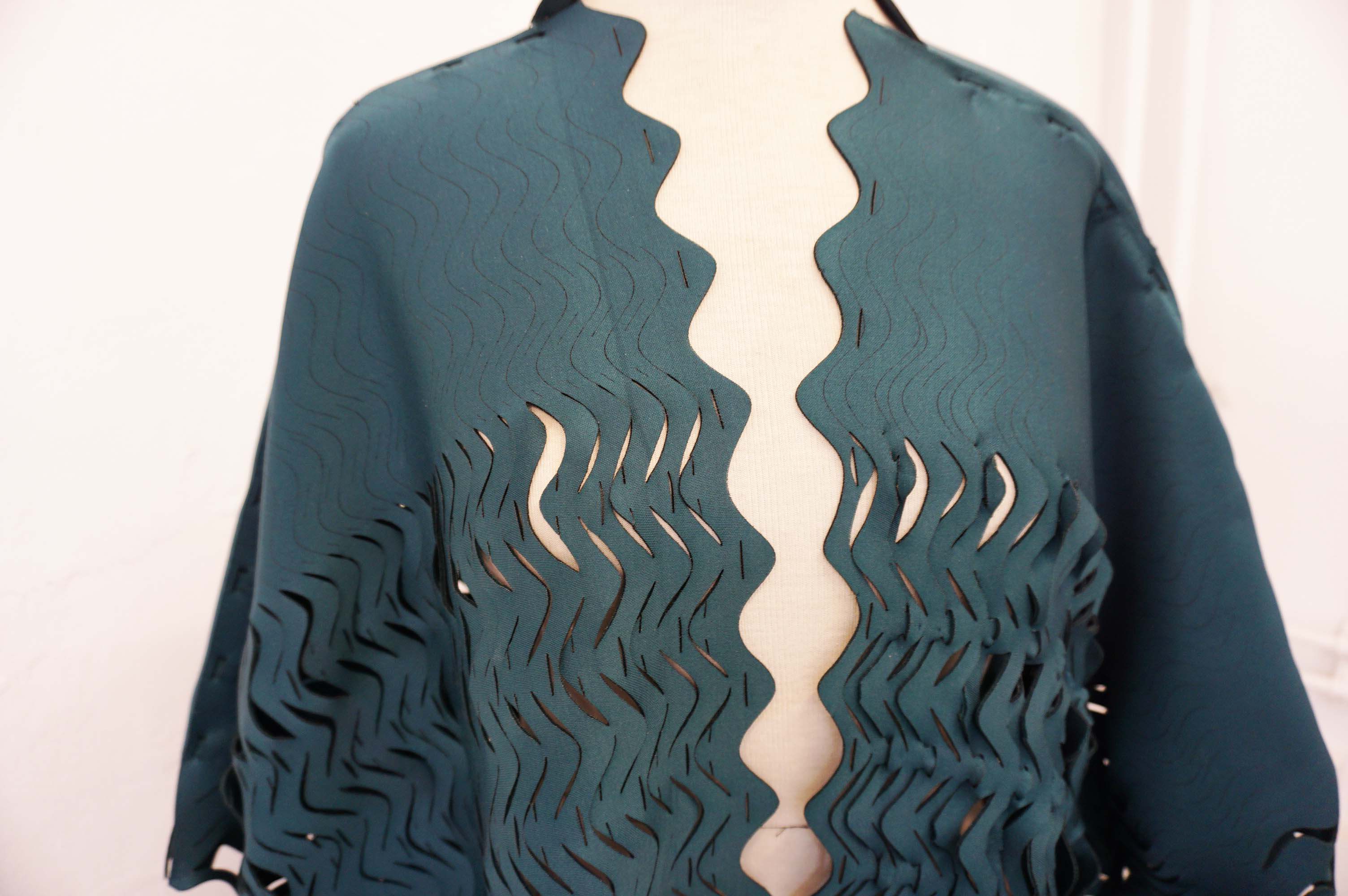
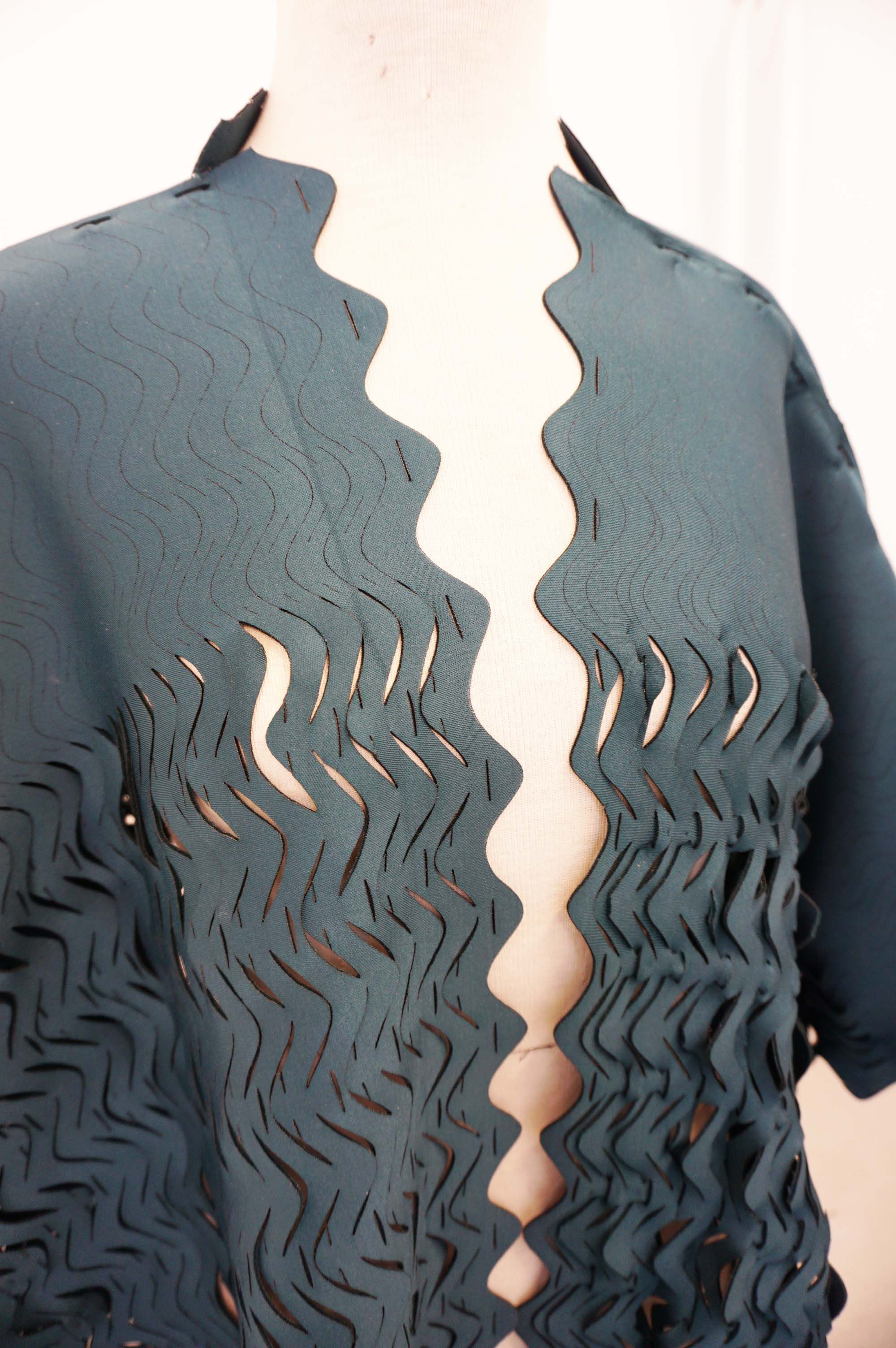
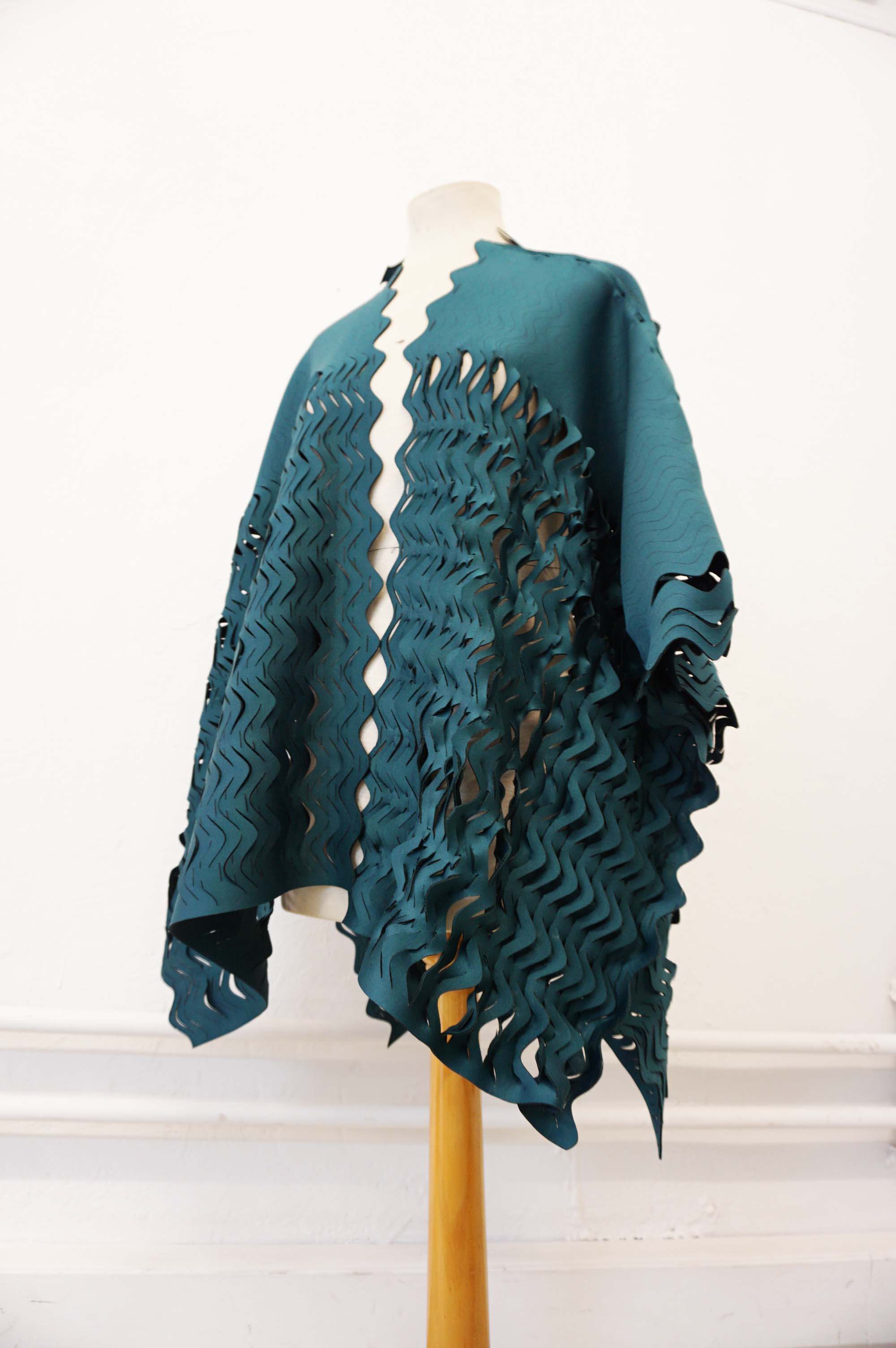
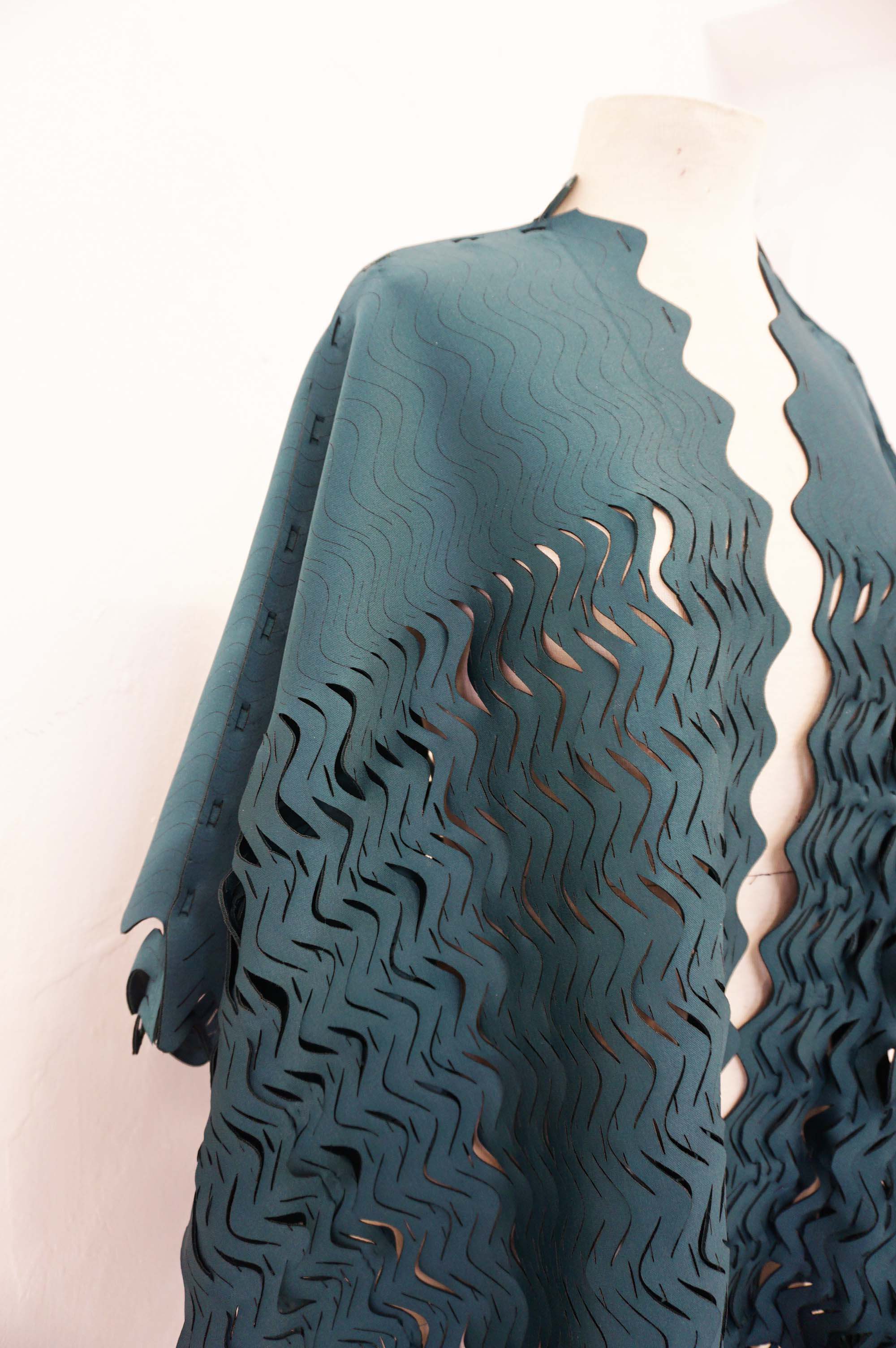
FILES - OPEN SOURCE¶
Last update: 2022-01-09